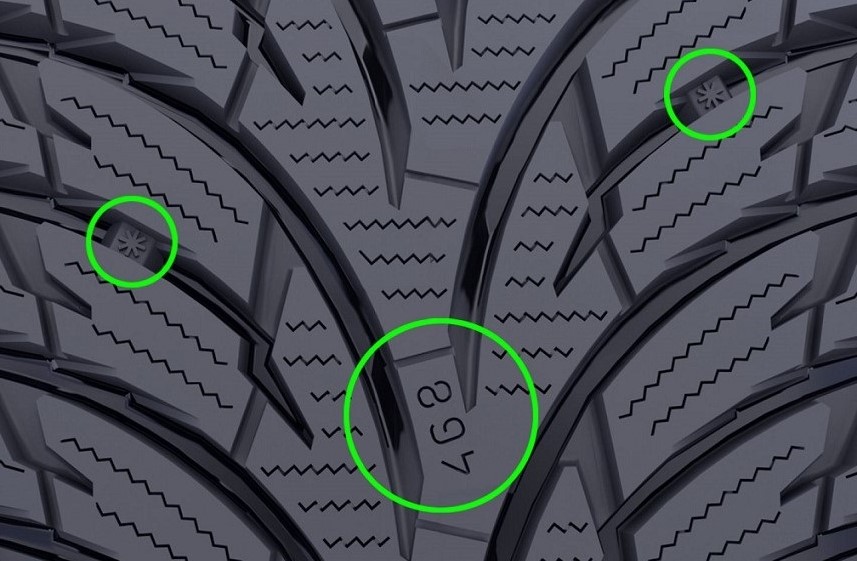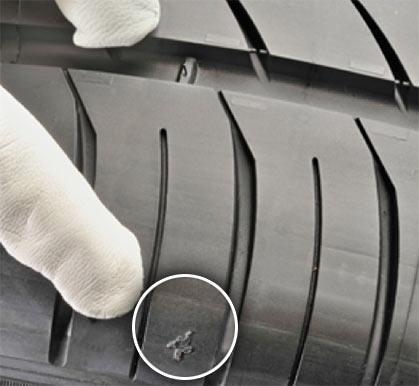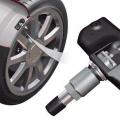Hello everyone, dear motorists! Any normal driver strives to drive a car not only with the maximum level of comfort, but also safety. This criterion is directly influenced by the steering and braking system, as well as the quality of the car tires. And we have already discussed what kind of rubber is better to buy for the winter, talked about the advisability of buying. An important role is played by the degree of wear, in determining it, a tire wear indicator can be a good assistant - what it is, and where you can find it, let's talk in today's publication.
One of the key characteristics, which is responsible for vehicle handling and its stability on the road, is the tire tread height. Sometimes it is not possible to objectively assess this indicator by eye. In this case, a special indicator that is integrated into the rubber by the manufacturer will not help. It is the tread that provides high-quality grip of the wheel with the road surface, and it is especially important to monitor its degree of wear in bad weather. During and after rain, snow, ice, the contact of the car with the road significantly deteriorates.
Traffic rules, for their part, regulate what the degree of wear should be, and for this, clear quantitative indicators are provided:
- passenger cars - 1.6 mm;
- motorcycles - 0.8 mm;
- buses - 2 mm;
- trucks - 1 mm.
And in order to assess the tread height, we just need an indicator that indicates tire wear. It is a part of the tread that differs in position, shape and size from the rest of the tire pattern. Most often, such an indicator is volumetric and placed in a groove. Another option is a digital beacon in the form of digital symbols at different depths.
Basic types of indicators
The simplest one is a volumetric type determinant, which functions simply and clearly. In the process of erasing the tread, it begins to compare with the height at which the beacon is located. This means that the tire must be replaced. Today, manufacturers equip rubber not only with the main, but also with intermediate indicators, so that the driver can track the erasure of the pattern in advance and prepare for replacement.
The digital indicator on the tires looks somewhat different. These are numbers that are stamped into the tire at a certain depth. The smallest number (usually 2) is at the deepest and vice versa. During operation, the protector will wear out, and the numbers themselves, accordingly, disappear. As soon as the latter disappears, it means that the rubber has reached a critical degree of wear. It is digital beacons that are most widespread for the reason that they do not need to be deciphered, and even a child can understand their meaning.
Offers from renowned manufacturers
The Nokian wear indicator has its own distinctive feature: it is a few numbers located in the center of the car's tread. It is with their help that it is possible to determine the change in the height of the pattern on the rubber, which is measured in millimeters. This manufacturer can additionally place a snowflake icon, which allows you to establish the nature of wear in the winter season. As soon as the designation disappears, that is, it is “eaten up,” the automobile rubber must be immediately replaced with a new one, since it will no longer give the same contact on a snowy road surface. 
The indicator from bridgestone differs slightly from it. There are arrows in several places on the outside of the rim. When they disappear, this means that the tread has reached its critical point, that is, its height does not exceed 1.6 mm. On winter tires, an additional indicator is provided in the form of a ribbed protrusion. It is applied in 4 places of the tire, which are equally distant from each other.
Consider what the Michelin manufacturer offers to its customers. To do this, you need to find any of the marks on the side of the tire. It can be a brand logo, a TWI badge, or a triangle image. The TWI icon tells us where to look for the indicator itself, which characterizes the degree of rubber wear. 
As soon as the height of the tire tread pattern begins to approach a dangerous value, the driver must take action. If you neglect this rule, then the length of the braking distance of the car increases. And this threatens with increased accidents. Experienced drivers always pay attention to the values of the wear determinant.
So we tried, friends, to determine where exactly the indicator finds, which tracks the degree of wear of the tread on car tires. Do not forget to also support in the wheels of your car. Now you have all the necessary knowledge to independently determine the moment when you need to go to the car shop for new wheels. Well, for today we will say goodbye, read the blog in the next issues and for now!




